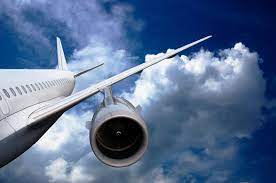Weather Hazards
Weather
Hazards (by Diego Llorente)
The climatic factor is very important in all phases of a flight, from its planning to the moment of completing all kinds of possible air operations. It is very important to check the weather conditions during flight planning and it is essential when talking about air safety. Aeronautical meteorology is an essential element of the complex system that constitutes Air Traffic Management (ATM). Without a doubt, meteorology conditions all aspects of air operations. Why is it so important to control the weather moments before the flight?
The first consideration is to mitigate all possible weather hazards. Aviation is based on safety and the efficiency of operations is due without fail to consider the weather conditions. In previous blogs, I have mentioned that the biggest cause of air accidents is the product of human error (60-80%) and the next is due to weather conditions (6-9%).C. M. Shun (2020) “Aviation is one of the sectors of the economy that is most sensitive to weather conditions. Science and technology are advancing rapidly, as are user demands, "said the president of the Mete Rheological Observatory in Hong Kong. Aviation has a very close relationship with meteorological conditions. Flights can be affected by various air factors such as convection, turbulence, icing, fog, wind, snow, or tropical cyclones as they occur in summer in the Caribbean area near Florida in the United States. The second cause of air accidents or incidents is caused by unfavorable weather conditions.
Other hazards to aviation are volcanic eruptions and volcanic ash clouds, dust and sandstorms, and phenomena such as space-meteorological or geomagnetic storms. This type of atmospheric factor affects aircraft engines as well as the issue of icing conditions.
In this blog, I will focus on commenting on one of the meteorological hazards that you have to be very careful in aviation and are the icing conditions. One of the biggest dangers to cold weather flights is icing on airplanes. The reason for this blog is to become aware of the serious consequences that can be obtained if a pilot or an air controller does not consider the weather factor. Safety is always first. In climatic conditions when we talk about ice, it refers to an element that, if present in the structure of the plane, can destroy the smooth flow of air, increasing resistance, while reducing the ability of an aerodynamic profile to create lift. On the other hand, it can affect the flight instruments if ice is found in the pitot-static system and the information that a pilot needs to fly would be wrong, affecting the safety and integrity of the flight. Many aircraft are prohibited from flying in icing conditions or, more specifically, in known icing conditions such as the following to be mentioned.
In conclusion, from
thunderstorms to icy clouds, the weather presents numerous dangers for small,
medium, and large aircraft. Climatic factors must always be considered when
flying. It is one of the possible dangers that can compromise and affect flight
safety. Icing as mentioned in this blog is one of the causes, but others of the
same magnitude such as microbursts and hail should not be overlooked, although
these are the ones that are rarely associated with accidents. On the other
hand, icing does. One cannot comment and speak for other pilots in a context like
these. It must be respected and better not to express an opinion without
knowledge because anyone can be in that place in the event of an accident or
incident due to weather. Respect in aviation is paramount and safety also for
the same reason one must analyze the flight, the procedures, analyze the
performance of the plane, the documentation, and everything related to what a
pilot must do. At the end of the day, the one who always has the last decision
is the Pilot in Command, on him and clearly, on him, the safety and well-being of
the flight will depend.
References
6 Of the Most Dangerous Weather Hazards In Aviation. (n.d.). Boldmethod Flight
Training. Retrieved September 20, 2021, from
https://www.boldmethod.com/blog/lists/2019/05/six-of-the-most-dangerous-weather-hazards-in-aviation/
American Psychological Association. (2019). Publication Manual of the
American Psychological Association: 7th Edition, 2020 Copyright (Seventh
ed.). American
Psychological Association.
Llorente, D. (2021). El sueño de ser
piloto comercial: De América Latina a los Estados Unidos (Spanish Edition)
(1st ed.). Editorial Autores de Argentina.









Comentarios
Publicar un comentario